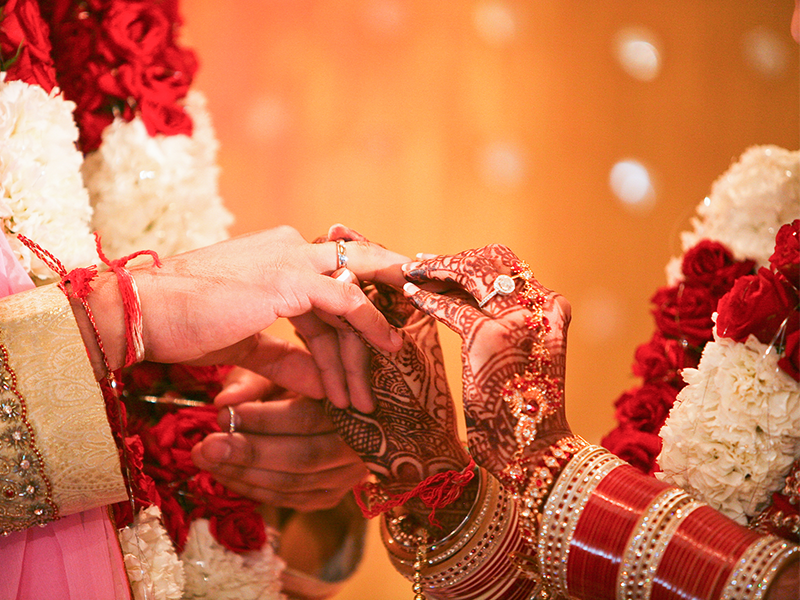

A Hindu wedding is vivaha (Sanskrit: विवाह) and the wedding ceremony is called vivaah sanskar. Hindus attach a great deal of importance to marriages. The ceremonies are very colourful, and celebrations may extend for several days. The bride's and groom's home - entrance, doors, wall, floor, roof - are sometimes decorated with colors, balloons and other decorations.
The rituals and process in a Hindu wedding vary widely. Nevertheless, there are a few key rituals common in Hindu weddings - Kanyadaan, Panigrahana, and Saptapadi, which are respectively, giving away of daughter by the father, voluntarily holding hand near the fire to signify union, and taking seven steps with each step includes a vow/promise to each other before fire. The Hindu wedding ceremony at its core is essentially a Vedic ritual. The primary witness of a Hindu marriage is the fire-deity (or the Sacred Fire) Agni, in the presence of family and friends. The ceremony is traditionally conducted entirely, or at least partially in Sanskrit considered by Hindus as the language of holy ceremonies. The local language of the bride and groom is also used.
The pre-wedding and post-wedding rituals and celebrations vary by region, preferences or the resources of the groom, bride and their families. They can range from one day to multi-day events. Pre-wedding ceremonies include engagement (involving vagdana or betrothal and lagna-patra written declaration), and arrival of the groom's party at the bride's residence, often in the form of a formal procession with dancing and music. The post-wedding ceremonies may include Abhishek, Anna Prashashan, Aashirvadah, and Grihapravesa - the welcoming of the bride to her new home. The wedding marks the start of Grihastha (householder) stage of life for the new couple.
In India, by law and tradition, no Hindu marriage is binding and complete unless the ritual of seven steps and vows in presence of fire (Saptapadi) is completed by the bride and the groom together.